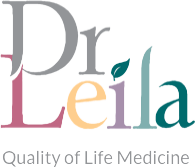
How Toxins Affect the Body And Why We Need to Detoxify
Lately, I have been finding that I talk incessantly about toxins. I feel like a one-trick pony in that I relate every illness and even every symptom to toxins. Do you have gut issues? It is probably toxins. Infertility? Toxins. Adrenal fatigue? Toxins. Hormone imbalance? Toxins. Auto-immunity? Toxins. Heart disease? Well, you get the idea. I know it is not pleasant to learn how toxins affect the body. None of us like to think that we are toxic, but nearly every test that I get shows higher levels than are healthy. No wonder there is so much illness in our society.
So Many Toxins!
There are so many different toxins, and we are so bathed in them, it is challenging at times to know where to start. I can say with chagrin that New York State makes it easy for me because the state allows functional medicine doctors to test for only one class of toxins – the heavy metals.
Heavy metals are metals that are not typically found in the environment, but due to industrialization, they are. Heavy metals include lead, mercury, arsenic, cadmium, and aluminum (the entire list is much longer). Mind you, I do think it is incredibly important to test for and treat heavy metals, but it would also be nice to know about the levels of plastics, pesticides, insecticides, and industrial agents in my patients’ bodies. I am not 100% certain why the state doesn’t allow for testing of these other categories, but I hope one day that I will be able to test for any and all toxins.
Testing to See How Toxins Affect the Body
I have been ordering the heavy metal toxin test quite a bit lately. This is a specialized test through an independent lab called Doctor’s Data. We can’t test for levels of toxins in the blood because the body does a very good job of tucking toxins inside cells to shield the brain from the effects of toxins. Blood levels of lead and mercury don’t tell us about the body’s burden.
To truly know where someone’s heavy metal levels are, I have to do a urine chelation challenge test. The person being tested takes a chelating agent – usually a synthetic amino acid – that pulls metals out of the cells. Urine is collected for 6 hours after the chelating agent is taken and a sample then sent to the lab. In most other states, heavy metal testing is also available through hair analysis, but again, this test is not allowed in New York State.
Still, I am happy that we can do urine testing. Mostly I find that people are terribly toxic in lead and somewhat toxic in mercury. Of course, there are folks who are toxic in other metals (I was most recently found to have lead, mercury, and thallium of all things), but lead and mercury are the two biggies.
We hear so much about lead toxicity in the water in schools, but truth be told, the water in schools is no different than the water in our houses. Think of it – even though we may be diligent about using water filters and changing out the lead pipes in our houses, pretty much all the municipal water pipes are still lead.
Lead is also found in pesticides, plastics, paints, ammunition, roofing materials, and of course the soil in general. Just because lead paint and lead gasoline were banned in the 1970s doesn’t mean that lead ever left the environment.
Lead is a known neurotoxin. That means it affects the brain and the nervous system. It can cause colic in babies, developmental delay, and retardation in children. In adults, it causes infertility, anxiety, headaches, fatigue, autoimmunity, and cancer. Oh, and hypertension, high blood sugar, and high cholesterol. Quite the list, eh? So if you feel anxious for no good reason or your cholesterol is high despite a great diet and exercise, well, maybe you too are lead toxic!
Mercury
Mercury is the other main heavy metal that I find in many patients. Of course, we all think of fish as a source of mercury, but the Germans have done wonderful studies showing that mercury amalgams are the largest source of mercury exposure, and that blood levels of mercury rise for at least two hours after chewing a meal.
Mercury is also a neurotoxin and has been shown to cause emotional disturbances, irritability, menstrual issues, birth defects, autoimmunity, and yes, the metabolic syndrome – the triad of diabetes, high cholesterol, and hypertension.
Honestly, it has blown my mind as a family doc seeing how so many people’s high cholesterol and high blood sugars have come down after a few months of detoxification! I had one patient who reduced his bad cholesterol from 123 to 89 with just four months of detox, and another that brought his HbA1c (sugars over three months) down a point and a half with detox! If a drug did that, it would be an overnight success.
How to Detoxify
Now that I have clued you into the horrors of toxins (and we have not even skimmed the surface), I hope you are asking the question ‘how do I detoxify?’ There are two sides to the detox question.
The first is to support the body in its ability to detoxify. In order to process toxins, the liver needs natural remedies such as B vitamins and antioxidants such as alpha lipoic acid, coenzyme Q10, vitamins C and E, and the all-important glutathione. Glutathione is the body’s most powerful antioxidant. Without it, the body simply cannot clear toxins. The body makes its own glutathione, but it needs the building blocks to glutathione, namely N-acetyl cysteine.
It is so important to supplement with these nutrients before starting on a detoxification program, and even more so now that scientists have discovered that most of us have genetic defects in the enzymes in the liver that help us clear toxins. By supplementing with B vitamins, we are overcoming those enzymatic defects.
Once these essential nutrients are in place, we can then start on specific chelating agents – agents that bind toxins and pull them out of the body. These include over-the-counter items such as activated charcoal, bentonite clay, high-dose chlorella, EDTA, and DMPS, along with prescription items such as DMSA. If you are working with a functional medicine provider who can test for heavy metals it will be easy to decide, because different metals are chelated by different agents.
If you are not under the guidance of a functional medicine provider then sticking with more natural remedies such as activated charcoal, bentonite clay, or high dose chlorella would be the safer choices.
Is It Possible to Avoid Toxins Completely?
Of course, avoidance of toxins is always a good place to start, but the bottom line is that it is impossible to avoid all toxins. We are just bathed in them. Certainly, any efforts we can make to reduce exposure can help, but the bottom line is that we just can’t make ourselves crazy about avoiding toxins because it is impossible.
Studies do show that eating organic food for two weeks has been shown to decrease blood levels of toxins by 90%. Filtering water can reduce toxin intake as well. The environmental working group (EWG) has wonderful tools to help you decide how best to spend your dollars. Every year they publish the “clean fifteen” and “dirty dozen” lists of fruits and vegetables that have the fewest and the most pesticides. The EWG also has a wonderful tool on the web to help you decide which water filter is the best for you based on what toxin you are trying to avoid and on your budget.
The bottom line is to be aware of toxins in the environment, learn how toxins affect the body, and to do your best to avoid them. In the meantime take your B vitamins and antioxidants and stay positive by looking at all the beauty in the world!
If you’d like more information on how toxins affect the body, email info@drleila.com or use our contact form. We’d love to answer your questions!








